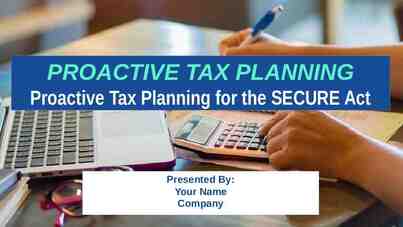Enterprise Service Management (ESM) An Approach for Adopting and
13 Slides1.38 MB
Enterprise Service Management (ESM) An Approach for Adopting and Adapting Best Practice Programs to Manage, Secure and Improve an Organizations Information Services Portfolio itSM003 v.3.0
Agenda and Objectives What is Enterprise Service Management (ESM) What are ESM Best Practices? What is the ESM Service Lifecycle Adopting and Adapting an ESM Program ESM Starter Kit 2005 The Nichols-Kuhn Group
What is Enterprise Service Management (ESM)? Enterprise Service Management (ESM) is an approach for adopting and adapting widely accepted global best practice frameworks, methodologies and standards to proactively ensure information assets and services are aligned with the cost, quality, compliance, security, risk and continuity goals of the business or mission. 2005 The Nichols-Kuhn Group
What are ESM Best Practices? ITIL best practice framework provides guidance and trainings on what enterprises should be doing to proactively manage and improve its information services portfolio in terms of cost, quality and continuity NIST cyber security best practice framework provides guidance and trainings on what enterprises should be doing to proactively manage and improve its information service portfolio in terms of security. RESILIA , and Cobit best practice frameworks provide guidance and trainings on what enterprises should be doing to proactively manage and improve its information service portfolio in terms of risk and compliance. Prince 2 methodology and the PMI best practice framework provide guidance and trainings on how enterprises can improve the success of its information service projects by using knowledge and techniques that tie project results to business outcomes. 2005 The Nichols-Kuhn Group
What is the ESM Service Lifecycle? The ESM service lifecycle is a structured approach to designing, delivering, managing and improving information technology (IT) services within an enterprise. The goal of the ESM lifecycle is to ensure that the right people, process and technology controls are in place to ensure an enterprise can meet its cost, quality, compliance, security, risk and continuity goals. 2005 The Nichols-Kuhn Group
Adopting & Adapting an ESM Program Secure, Select, Condition, Empower, Institutionalize A Five Phase Approach to Adopting & Adapting ESM Best Practices Securing Executive Commitment Selecting the Leadership Team Conditioning the Organization for Change Empowering the Organization to Change Institutionalizing the Program with HR 2005 The Nichols-Kuhn Group
Phase #1 – Securing Executive Commitment Securing Executive Commitment Organization Role CEO, CFO, CIO, CISO CRO, CCO, PMO Director, SMO Director, Governance Director Objective This set of programs will help the executive team better understand the benefits and value of adopting an ESM best practice program Training Programs ESM Best Practice Executive Overview ESM Best Practice Executive Simulations 2005 The Nichols-Kuhn Group
Phase #2 – Selecting the Leadership Team Selecting the Leadership Team Organization Role Objective Process Owners, Service Owners, Change Mgrs. Operation Mgrs. CSI Mgrs. Business Analysts This program will train and certify at the Expert level the leadership team of the ESM best practice program. These key contributors will assist in developing the roadmap plus become the primary thought leaders and evangelists for the ESM best practice program 2005 The Nichols-Kuhn Group Training Programs ITIL Training RESILIA Training Prince 2 Training NIST Training Cyber Security Training Planning to Change Workshop Assessment Workshop Simulations
Phase #3 – Conditioning the Organization for Change Conditioning the Organization for Change Organization Role Objective All IT staff, senior leadership, stakeholders and supply chain partners This program will provide basic training and certification for those who will play passive and active roles in an ESM program. This certification will also provide a portion of the student population the base certification they need to advance to phase 4 specialist training 2005 The Nichols-Kuhn Group Training Program Passive Roles ITIL Awareness RESILIA Awareness Active Roles ITIL Foundation ITIL Simulation RESILIA Foundation RESILIA Simulation
Phase #4 – Empowering the Organization to Change Empowering the Organization to Change Organization Role 1st Line Mgrs. Process & Service Owners Architects & Strategists Operation & System, Analysts Business & Quality Analysts Program & Project Managers Operation & Change Mgrs. Service Level & CSI Mgrs. Tool Administrators Objective Gain hands on specialist capabilities in ESM best practices Training Programs ITIL Foundation & Practitioner ITIL Intermediate RESILIA Foundation RESILIA Practitioner Prince 2 Foundation Prince 2 Practitioner IIBA Business Analysis ISO 27001, ISO 31000 Security User Awareness Cyber Security Training Mentoring Workshops Simulations 2005 The Nichols-Kuhn Group
Phase #5 – Institutionalize the Program with HR Institutionalize the Program with HR Organization Role HR Manager Objective Establish new HR Policies in the areas of recognition, rewards hiring, promotions & role based career development 2005 The Nichols-Kuhn Group Activities Setup both eLearning and rolebased Blended Learning ESM best practice training solutions for new and existing employees
ESM Best Practice Training Starter Kit Problem Purpose Organizations need to adopt and adapt ESM best practices to ensure that information services are aligned with corporate quality, security and risk goals To prepare the leadership team to participate in assessing the organizations ability to adopt change and ESM best practices Activities Train the leadership team so they can participate in a ESM best practice maturity and education assessment Deliverables Phase 1A - IT Best Practice Foundation Training for the Leadership Team Phase 1B - IT Best Practice Organizational Assessment with the Leadership Team Phase 1C - IT Best Practice Education Assessment with the Leadership Team Options Phase 1A1 - Optional Best Practice Simulation Training 2005 The Nichols-Kuhn Group
Questions & Answers 2005 The Nichols-Kuhn Group


















